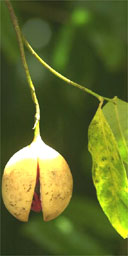
What was most noticeable about the local cricketer from Carriacou was not the cavalier way he played his strokes but his choice of attire, which included bright orange sun glasses and a ribbon tied round his dreadlocked hair.
This was a man at ease with both his cricket and his island life. Carriacou, one of two small islands which come under the wing of the larger Caribbean island of Grenada, is also a place at ease with itself. It is not as tourist-conscious as its mother island, and those who make the journey from there, either by boat or by air taxi, find themselves slowing to a pace that nearly matches the locals' lifestyle.
Carriacou, which means Land of Reefs, is traditional without being glamorous. It's also uncluttered by the cruise-liner tourists who step off into St George's, the capital of Grenada, and flock into the bars and cafes in straw hats and long white socks for a couple of hours at a time.
The brightly attired Carriacou cricketer was playing a side of journalists visiting from Britain and, with the advantage of knowing how to play on a pitch made of dried clay, was making hay with a heavyweight bat, knocking the ball all over the ground without so much as a drop of sweat appearing on his shades.
An appreciation of the art of island cricket is not an essential ingredient for enjoying a few days in Carriacou. Just spending time drinking coffee or something alcoholic on a terrace overlooking the sea and watching the gulls dive for fish should be enough to drive out any remaining stress from work.
Accommodation can be booked in places that have appealing names, such as Gramma's Apartments, the Green Roof Inn, and Millie's Guesthouse, all low key, low profile and unfussy.
A little time in Carriacou adds an extra frisson to a two-week holiday in Grenada, which is one of the greenest and most botan ically rich of the Caribbean islands. The steep hillsides, narrow lanes and mountain-tops are heaving with bougainvillea, wild fuchsia, orchids, cactus, poinsettia, African tulips and hibiscus.
You may arrive without much knowledge of Grenada's flora and fauna or birdlife but, provided you can extract yourself from the Grand Anse beach, it is impossible not to pick up at least a degree of knowledge when faced with such an array, including frangipani, heliconia, ixora, anthurium, blue mahoe and 32 varieties of bamboo.
Of course, Grenada is famous for its spices, notably nutmeg, cinnamon, cloves, ginger, turmeric and mace. As the locals tell you, there are more spices per square mile than in any other place on the planet, and you need to venture up into the tropical rain forest in Grand Etang National Park, about eight miles from St George's, to benefit most from the variety of potent scents.
It is difficult to imagine that this island, filled with such friendly, laid-back people, was immersed in revolution 19 years ago when the Marxist Prime Minister and several of his closest associates were murdered by soldiers acting for a breakaway section of the government. Six days later the island was invaded by American commandos, who helped to restore order. Nineteen American servicemen and 60 Grenadian troops died.
Holidaymakers wishing to see where the action took place can visit some of the island's old forts, such as Fort George, where much of the rebellion took place. A book called Big Sky, Little Bullet, written by the islander Maurice Patterson describes the dramatic events that led up to the outburst of violence on 19 October 1983, although the prose is somewhat quaint.
Unfortunately for the Grenadian tourist board, the island was thrust into prominence again earlier this year when a British county cricketer and his brother drowned in a deep pool at the Concord waterfall. Extra safety advice is now given to visitors wanting to swim at this beautiful spot, which remains popular.
The beaches and coastline hotels, none of them higher than the highest palm tree, have all the ingredients for a relaxing holiday, but Grenada has such character that it would be neglectful not to explore as much of the island as possible.
St George's is one of the prettiest harbour capitals in the Caribbean, with its background of hills dotted with houses and shacks painted yellow, pink, tangerine, lilac and white. The local market is so packed with spices, exotic fruit and vegetables that there's hardly room to manoeuvre between the stalls.
For fish lovers, eating out provides one of the easiest decisions of the day. Restaurants such as the Beach House, the Aquarium and the Coconut Beach all serve fresh tuna, kingfish and dorado which are simply fried and served with breadfruit, sweet potato and rice.
Up in the hills is the River Antoine rum distillery where the sugar cane for the potent drink is still crushed by machinery operated by a water wheel. The distillery is so primitive that little has changed since it was opened in the eighteenth century, and to drink the pure rum that drips out of the network of tubes and pipes requires not thirst but courage. The owner tells you his Rivers Rum is between 85 and 90 per cent alcohol, and 15,000 gallons of it is produced each year, all for Grenadian consumption.
That Carriacou cricketer looked as though he could down a few pints.

